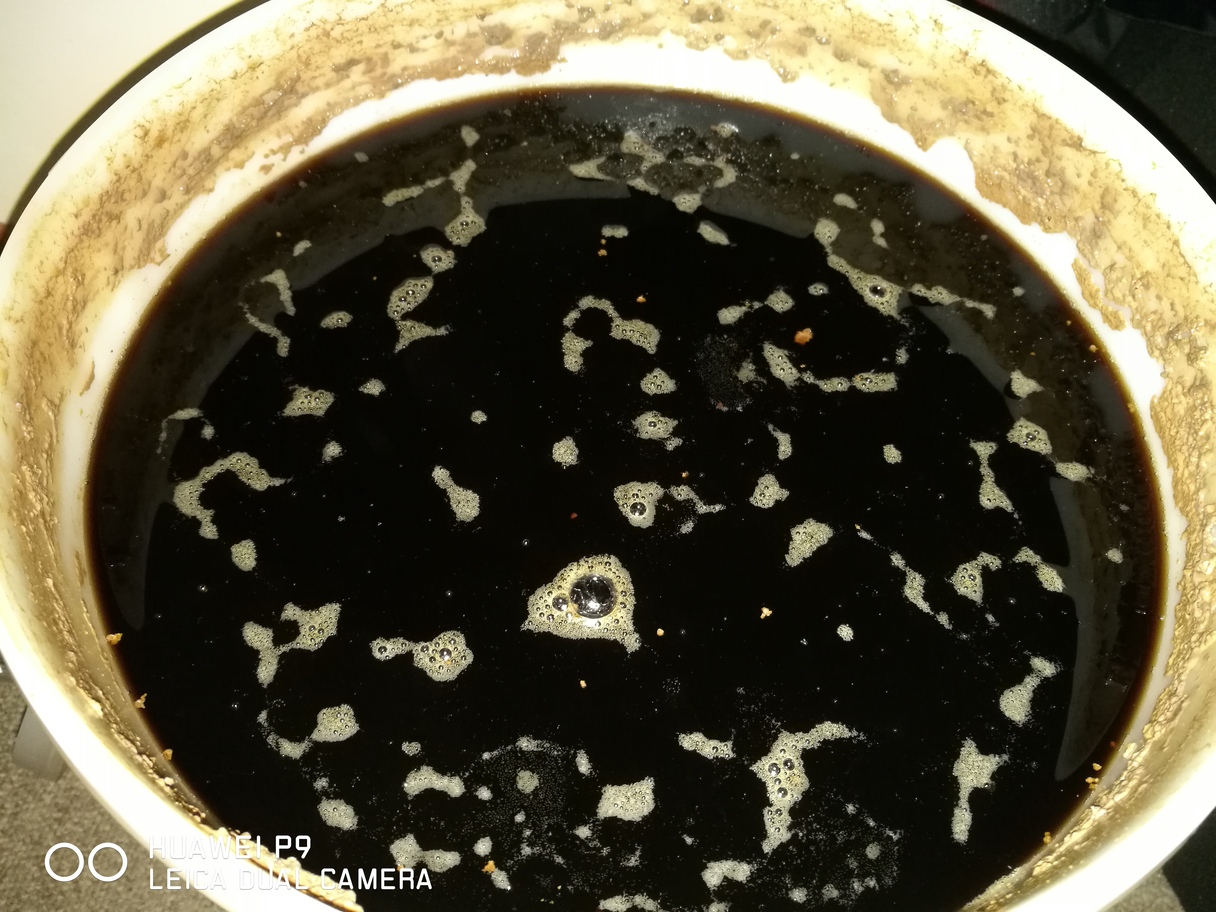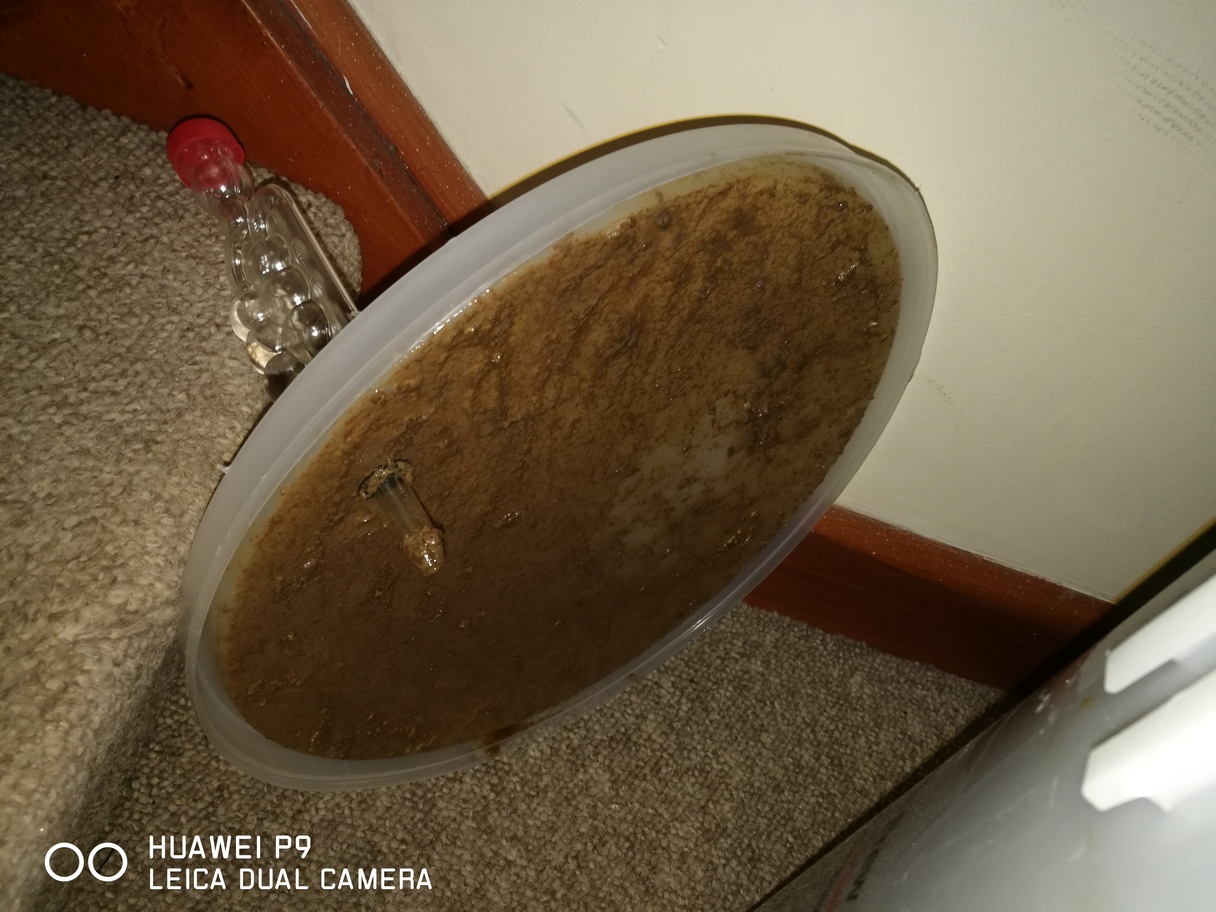wildmanbrew
Active Member
After reading a few hundred posts about coopers stout i decided to give it a go.
Instead of the 1kg of sugar the recipe asks for, i decided to add 1kg of medium spray malt (dark or extra dark would have been better but i can only get light and medium), and a 454g tin of black treacle.
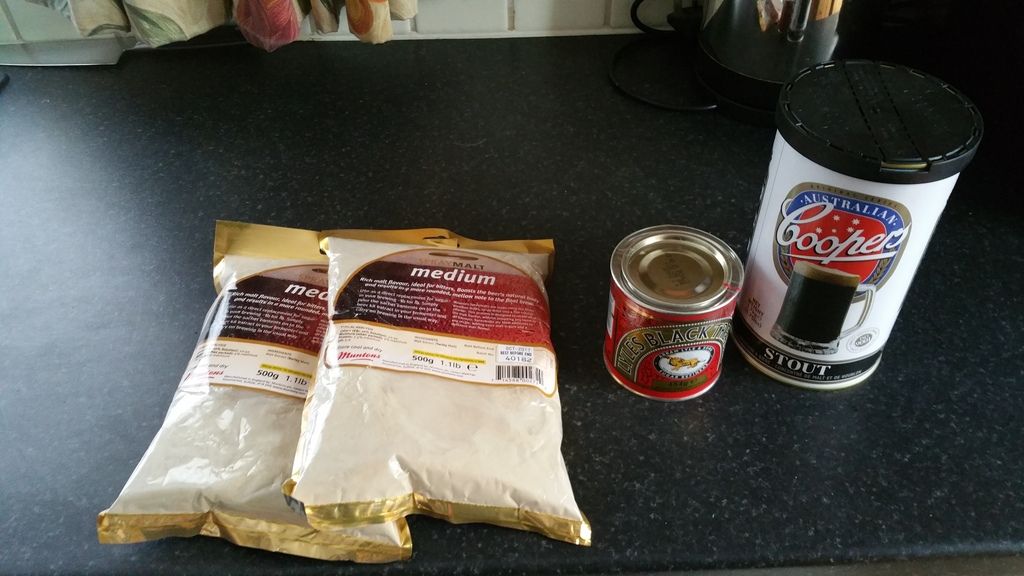
Before starting ensure all your equiptment is where you want it and that it is clean from last use. Also ensure you wont be disturbed. Other people tend to be ignorant about homebrew. They wont realise everything has to be spotless and sterile. During my brew this afternoon i had a muddy dog and a snotty nosed owner within feet of my exposed wort. Theres nothing raises the blood pressure more than than a potential contaminant to your brew!
Step 1 - Steralising Equiptment

Ideally id use a no rinse product such as starsan, but i dont have any so youngs and wilkos will have to do. Follow instructions carefully

Step 2 - Preparation
Your kit will tell you how much boiling water you will need to mix it. I boil mine on the gas in clean pans, a kettle will do the same job but you may need to refill a few times.
At this point also i peel the label off the can and place it in boiling water, turning it over every 5 mins or so to loosen it up. I also ait the treacle in a bath of hot water but keep an eye out for leaks down the seal aide of the can. I had one today.

Step 3 - Mixing the wort
Open your can(s) of extract and pour into the FV. Fill the can with boiling water (use a cloth to hold the can it will be hot) and stir to dissolve the left over malt extract that clings to the sides and bottom of the can. Tip the water extract mix into the FV over the open lid of the can to dissolveany extract from it. Add the treacle at this point and rinse the can out with boiling water into the FV.

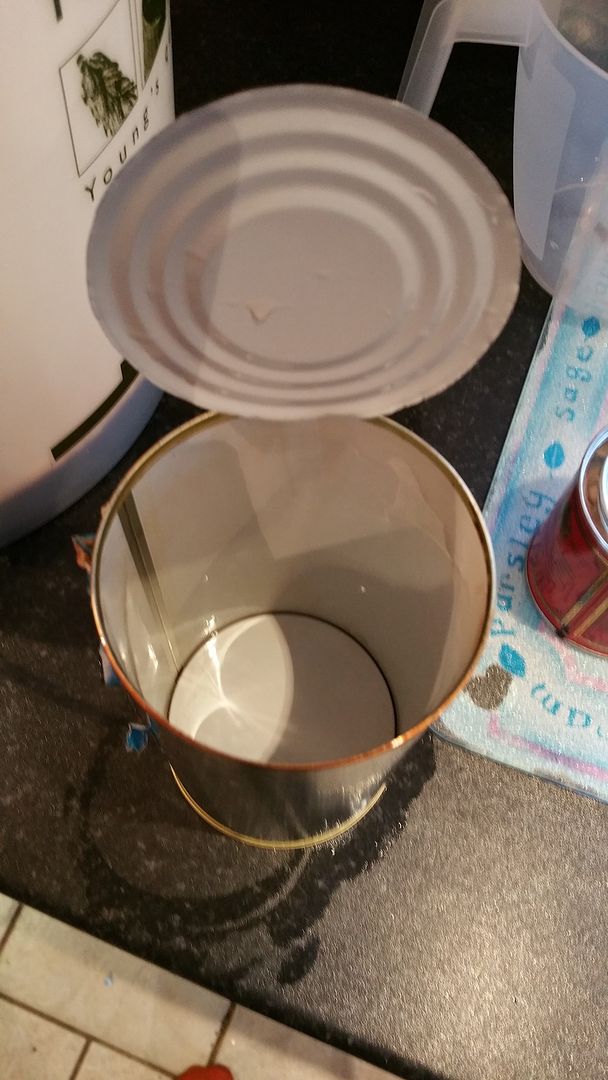
Mix up really well! Beat the hell out of it! Feel around the bottom of the FV with your mixing spoon/paddle you will feel any sticky extract that hasnt dissolved yet. If you get lots of foam building up, Great! Getting as much air in to the mix as you can will help the yeast later on.

Now adding the spray malt. If you just chuck it all in at once you will find it just coagulates into giant lumps as i found out earlier (id not used spray malt before). Another good beating and eventually it all dissolved but it took a while. Crushing the lumps against the side of the FV helped no end.
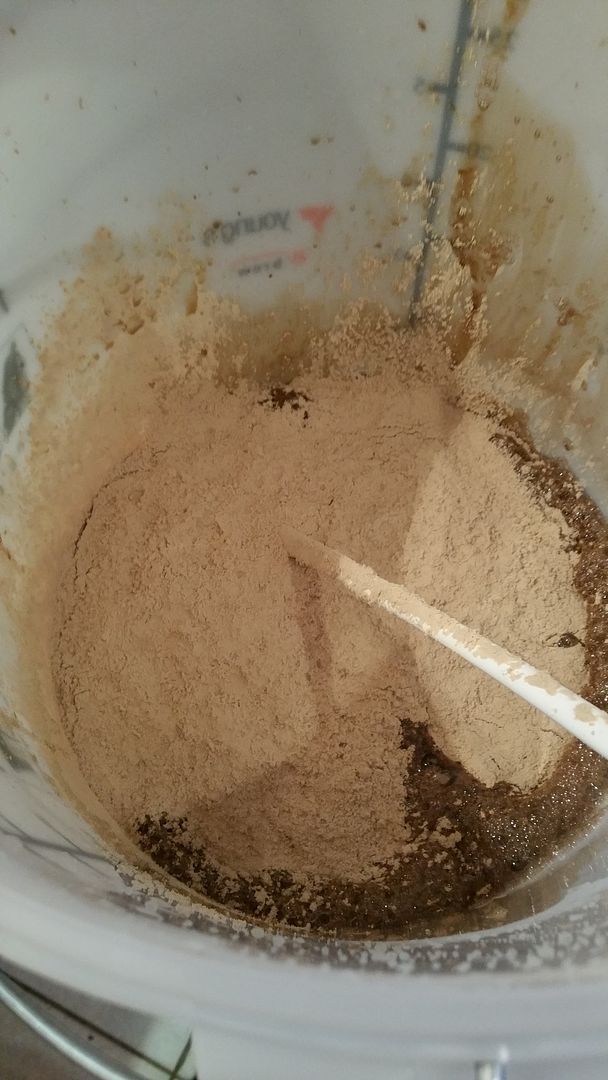
Now top up with your cold water. The kit says top up to 23 litres but it is recommended to "brew it short" at only 20-21 litres, this gives a little extra body, mouthfeel and a little bump in abv to the beer.

Once topped up take a sample in your steralised trial jar. Let it stand for a minute or 2 to let any head in the jar settle. Place your Hydrometer in and give it a spin, this will throw off any small bubbles from the hydrometer stopping false readings. To read the measurement accuratly you should read it in level with the rest of the liquid not where it rises up slightly incontact with the hydrometer. This brew came out at 1.051.
Do Not return the sample back to the FV! Either drink it or chuck it down the sink. I forgot to take a picture of this stage.
Right back to beating the hell out of it again. Airating your wort will help the yeast to ferment beer faster and more efficiently. This is the only time ever that you want to expose your beer to air! Give it a good whip up and get a good head of foam.
Step 4 - Pitching the yeast
Chexk the temperature. Is this kit the yeast should be added between 19 and 27 degrees.
Cut open your yeast packet and sprinkle evenly over the surface of the foam, put the lid on the FV and set up your airlock. In the case of this brew i have attached a blow off made of a siphon tube into a jug of water. Im expecting a very vigourous fermentation with this, so any escaping krausen instead of spraying the ceiling (as has been seen before!) Will drain into the jug. The water as in an airlock will stop air and any other nasties entering the FV.

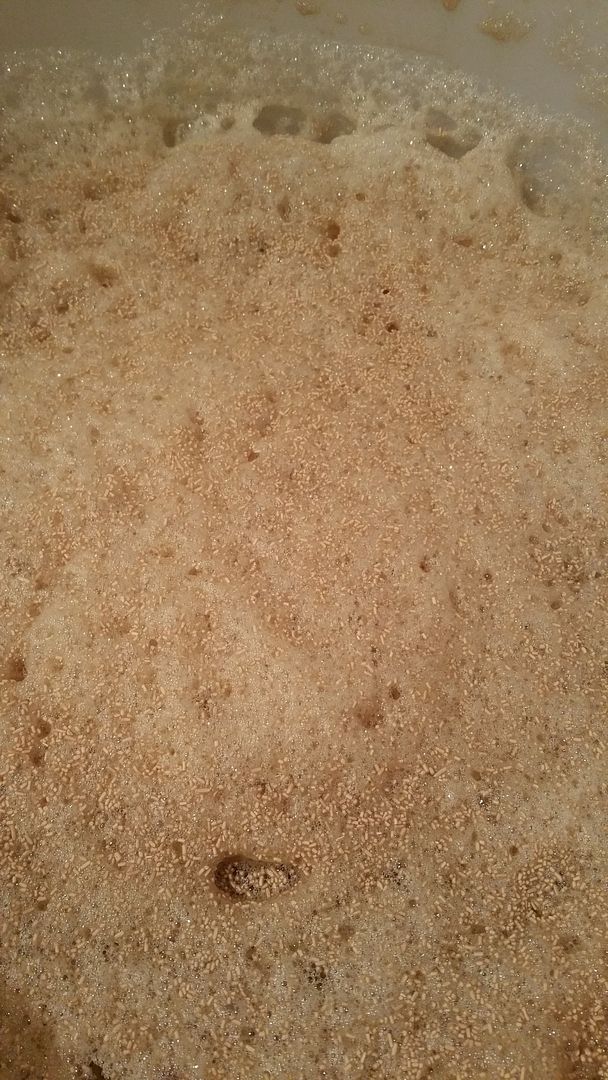
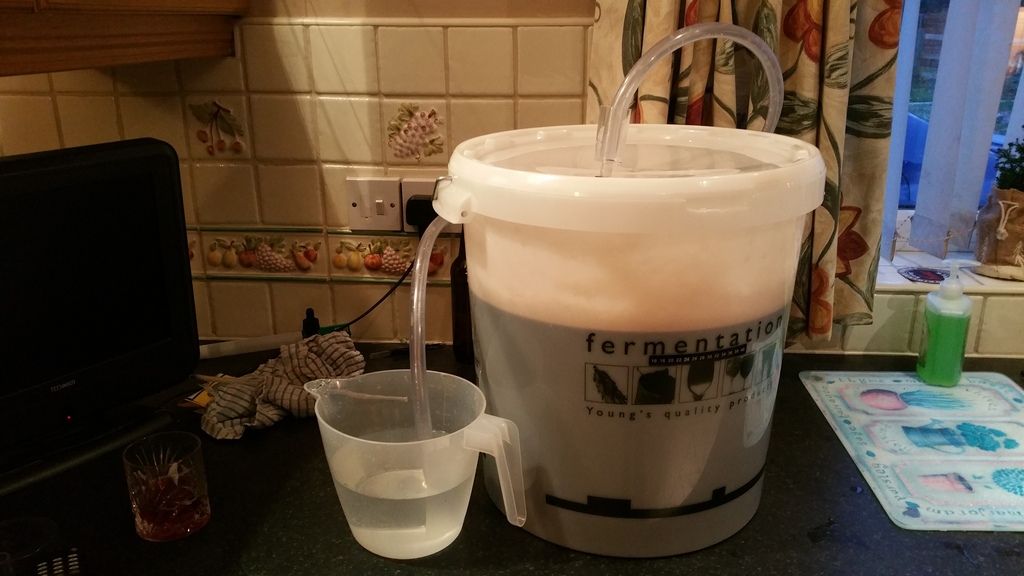
Instead of the 1kg of sugar the recipe asks for, i decided to add 1kg of medium spray malt (dark or extra dark would have been better but i can only get light and medium), and a 454g tin of black treacle.

Before starting ensure all your equiptment is where you want it and that it is clean from last use. Also ensure you wont be disturbed. Other people tend to be ignorant about homebrew. They wont realise everything has to be spotless and sterile. During my brew this afternoon i had a muddy dog and a snotty nosed owner within feet of my exposed wort. Theres nothing raises the blood pressure more than than a potential contaminant to your brew!
Step 1 - Steralising Equiptment

Ideally id use a no rinse product such as starsan, but i dont have any so youngs and wilkos will have to do. Follow instructions carefully

Step 2 - Preparation
Your kit will tell you how much boiling water you will need to mix it. I boil mine on the gas in clean pans, a kettle will do the same job but you may need to refill a few times.
At this point also i peel the label off the can and place it in boiling water, turning it over every 5 mins or so to loosen it up. I also ait the treacle in a bath of hot water but keep an eye out for leaks down the seal aide of the can. I had one today.

Step 3 - Mixing the wort
Open your can(s) of extract and pour into the FV. Fill the can with boiling water (use a cloth to hold the can it will be hot) and stir to dissolve the left over malt extract that clings to the sides and bottom of the can. Tip the water extract mix into the FV over the open lid of the can to dissolveany extract from it. Add the treacle at this point and rinse the can out with boiling water into the FV.


Mix up really well! Beat the hell out of it! Feel around the bottom of the FV with your mixing spoon/paddle you will feel any sticky extract that hasnt dissolved yet. If you get lots of foam building up, Great! Getting as much air in to the mix as you can will help the yeast later on.

Now adding the spray malt. If you just chuck it all in at once you will find it just coagulates into giant lumps as i found out earlier (id not used spray malt before). Another good beating and eventually it all dissolved but it took a while. Crushing the lumps against the side of the FV helped no end.

Now top up with your cold water. The kit says top up to 23 litres but it is recommended to "brew it short" at only 20-21 litres, this gives a little extra body, mouthfeel and a little bump in abv to the beer.

Once topped up take a sample in your steralised trial jar. Let it stand for a minute or 2 to let any head in the jar settle. Place your Hydrometer in and give it a spin, this will throw off any small bubbles from the hydrometer stopping false readings. To read the measurement accuratly you should read it in level with the rest of the liquid not where it rises up slightly incontact with the hydrometer. This brew came out at 1.051.
Do Not return the sample back to the FV! Either drink it or chuck it down the sink. I forgot to take a picture of this stage.
Right back to beating the hell out of it again. Airating your wort will help the yeast to ferment beer faster and more efficiently. This is the only time ever that you want to expose your beer to air! Give it a good whip up and get a good head of foam.
Step 4 - Pitching the yeast
Chexk the temperature. Is this kit the yeast should be added between 19 and 27 degrees.
Cut open your yeast packet and sprinkle evenly over the surface of the foam, put the lid on the FV and set up your airlock. In the case of this brew i have attached a blow off made of a siphon tube into a jug of water. Im expecting a very vigourous fermentation with this, so any escaping krausen instead of spraying the ceiling (as has been seen before!) Will drain into the jug. The water as in an airlock will stop air and any other nasties entering the FV.










































![BREWING THERMOMETER STICKERS ACCURATELY MONITOR FERMENTING BEER & WINE LIQUID TEMPERATURES 5PCS HOME BREW SPIRITS WINE LCD ADHESIVE [US]](https://m.media-amazon.com/images/I/311DDjo2X3L._SL500_.jpg)


